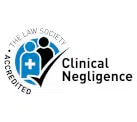Making a successful claim for post-traumatic stress disorder (PTSD) compensation you must be formally diagnosed with the disorder by a medical professional. Following diagnosis appropriate treatment can be assessed and started. In order for a diagnosis to be made the sufferer must display all of the following symptoms for at least one month:
Treatment for PTSD differs for everyone but the two most successful treatments are CBT and EMDR.
CBT is a talking therapy that looks at the trauma you have experienced and your thoughts surrounding the experience. It then looks at how your behavior and emotional state prevents you from progressing in day-to-day life as you did once before.
This type of therapy helps the patient how to manage their PTSD by teaching them to think and act in a different way. By tackling the traumatic event in some detail the therapists helps the sufferer through the distress of re-living the event whilst looking for any negative thoughts about the experience. Once negative thought patterns are recognized, ways in which to manage them are taught and put into practice.
When we sleep and, as a consequence dream, this is known as REM sleep. It is thought that during this state much of the information and emotional experiences in our brain are processed. If a traumatic event is introduced to the brain, then the REM process can be interrupted resulting in the brain remembering the distress and anguished caused. When this happens, the brain is left with a host of negative thoughts and is unable to manage them. The negative thoughts will often re-surface every time the patient remembers something associated with the trauma.
EMDR has been hailed as being highly effective in helping those who suffer with a multitude of anxiety related illnesses, including PTSD. It is a simple, non-invasive therapy using rapid eye movement (REM) to help the sufferer unlock the negative memories that have been stored within the nervous system and then help the brain to process the emotions of the traumatic event. The therapist moves their fingers backwards and forwards and whilst the patient follows the movement with their eyes, they enter a relaxed state in which they can talk about their experience. This is not a form of hypnosis.
Studies indicate that this type of treatment can help in eliminating the affected emotion. Whilst the memory stays on in the brain, the actual negative thought is deactivated. With a little bit of time this therapy helps to move the sufferer into a more clam and peaceful place.
Jason Brady at Holmes & Hills Solicitors is a specialist in representing sufferers of post-traumatic stress disorder and making compensation claims for PTSD on their behalf. Jason represents clients across the UK including military personnel suffering as a result of seeing active combat in war zones around the world, through to those involved in car accidents and victims of crime. If you have been affected by an accident that has caused you to experience PTSD then you may be able to make a PTSD compensation claim.






A Mackman Group collaboration - market research by Mackman Research | website design by Mackman